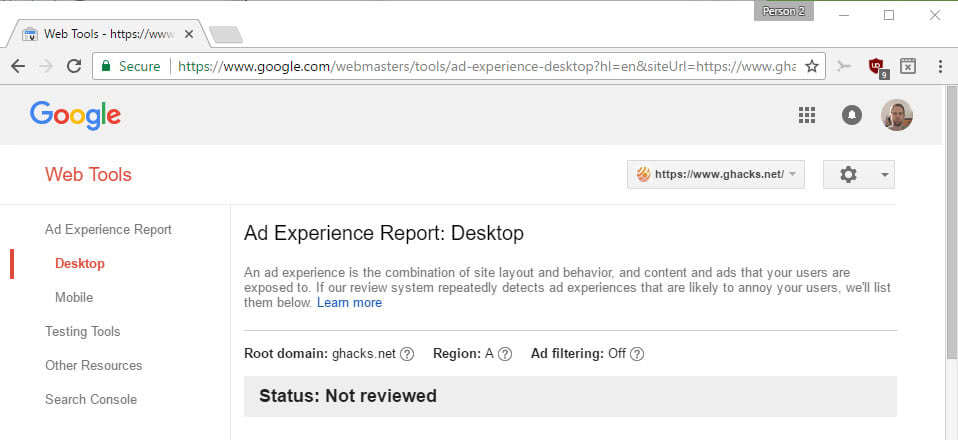Google revealed yesterday that the company’s Chrome web browser will start blocking some ads on the Internet from 2018 on.
Many sites reported that Google will integrate a native ad-blocker in the Google Chrome web browser, but that is only partially true.
While we don’t have any version of Chrome yet that supports the new tech, judging from Google’s description here, things are not as black and white as you’d expect them to be.
Fact is, that Google Chrome will block some ads starting in 2018. Google explains that Chrome will support the Better Ads Standard, published by an industry group that wants to improve ads online.
In dialogue with the Coalition and other industry groups, we plan to have Chrome stop showing ads (including those owned or served by Google) on websites that are not compliant with the Better Ads Standards starting in early 2018.
The Better Ads website highlights the following formats as problematic:
- Desktop: pop-up ads, auto-playing video ads with sound, prestitial ads with countdown, large sticky ads
- Mobile: pop-up ads, prestitial ads, pages with ad-density higher than 30%, flashing animated ads, auto-playing video ads with sound, postitial ads with countdown, full-screen scrollover ads, large sticky ads.
Google Chrome will block ads on websites that show advertisement that falls into the groups listed above. What this means is that Chrome will block all ads on those websites, not just the ads that are considered problematic by the industry group.

Google published a new tool for Webmasters on the official Search Console website that provides you with information on the site’s ad experience status. Google plans to list all ad experiences there that “annoy users” so that webmasters know that ads are blocked in Chrome by default. The page separates desktop from mobile, and may not show a reviewed status right away.
Google launched a new option for publishers to sustain their online business on top of that. The Funding Choices program allows publishers to customize messages to visitors with adblockers to invite them to disable ad blocking on the site, or support the site through the new Google Contributor system.
Google Contributor is a new system which websites and users may join. Users may buy credits, and pick websites out of the list of supported sites which they want to support. Each time a page is viewed on the site in question, some money is transferred to the account of the site operator. Sites may select what they charge per page view.
My Take
Google, as the world’s largest ad company, understands that ad blocking is on the rise, and that one cannot stop the trend with anti-ad-blocking solutions. The company’s believes that most Internet users don’t have a problem with advertisement in general, but with certain forms of advertisement.
I think that is true to a degree. What Google does not address at all are other things about ads that annoy part of the global Internet population. Two that come to my mind right away are tracking and malware ad campaigns.
Google is in an ideal position however as it controls much of the ad market and the browser market. If a company with less of a market share would roll out an initiate like this, it would probably bomb because of a lack of reach.
I’m pretty certain that Google will be able to reach a sizeable number of Chrome users who use ad blockers, and of course users who don’t use ad blockers.
It remains to be seen how good of an experience this will result in, and how publishers will fare when it comes to that.
Google Contributor on the other hand is something that I don’t think has a lot of staying power. Convincing users to join Contributor will be a tough sell but it depends on how the feature is promoted. If users see it on the sites they visit regularly, they may be inclined to give it a try.
I think it won’t reach that level of sustainability, especially since Google wants its cut of what users pay publishers.
Now You: What is your take on the announcement?